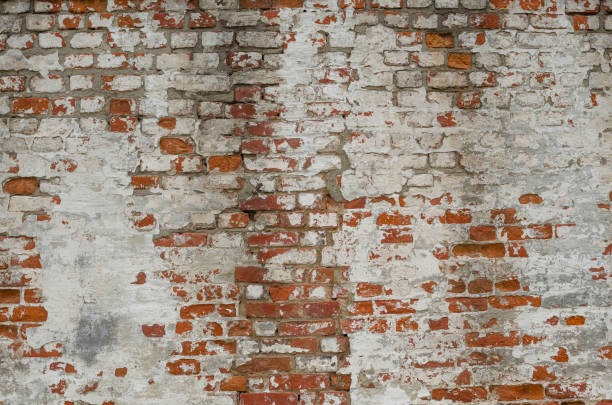Concrete is a durable and versatile construction material, but over time, it can show signs of wear and damage due to age and the elements. Catching early warning signs can help you avoid costly repairs and maintain safety and curb appeal. This guide explains key indicators of concrete damage, why they matter, and how to address them.
Why Pay Attention to Concrete Damage
Early intervention is everything when it comes to concrete. Minor issues that go unchecked often develop into major structural problems. Damaged concrete is not just unsightly; it can cause safety hazards, reduce property value, and lead to foundation issues if neglected for too long.
By understanding what to look for today, you’ll save yourself headaches and higher bills tomorrow.
Cracks in the Surface
One of the most common signs your concrete needs repair is cracking. Not all cracks carry the same weight:
- Hairline cracks are very narrow, often no more than a millimeter wide. They’re mostly cosmetic, but they can worsen if water seeps in and freezes.
- Wide or deep cracks often indicate more serious underlying issues, such as settling, shifting, or poor initial installation. Cracks larger than 1/4 inch wide can signal structural problems and should be assessed by a professional.
If you notice cracks spreading, deepening, or forming patterns (like spiderwebs or stair-steps), it’s time to act.
Uneven Surfaces and Sunken Areas
Have you noticed your once-level patio now has areas that dip or appear raised? Uneven concrete indicates that the sub-base has shifted. This can happen due to:
- Soil erosion beneath the slab
- Freeze-thaw cycles causing upheaval
- Poorly compacted base material
Uneven or sunken areas aren’t just unattractive; they are tripping hazards, especially in walkways and driveways. If you see pooling water after rain in certain spots, that’s also a telltale sign of an underlying issue.
Pitting and Spalling
Surface damage in the form of small holes (pits) and flaking or chipping (spalling) should never be ignored. These issues commonly result from freeze-thaw cycles, or when de-icing salts are used in winter. Over time, the surface layer of concrete can start to break down and leave a rough, unattractive surface.
Pitted and spalled concrete deteriorates faster, and if untreated, could expose the inner layers, making repairs more complicated and expensive.
Discoloration and Staining
While stains on concrete can be caused by oil, rust, or other substances, sometimes discoloration runs deeper than a simple surface issue. If you notice widespread or increasing discoloration, it could be a signal of:
- Water seeping into cracks (leading to mold or efflorescence)
- Chemical reactions within the concrete itself
- Issues with drainage or moisture under the slab
Unusual white, green, or dark patches are especially important to watch for, as they can indicate a problem beneath the surface that needs addressing.
Flaking and Scaling
Is your concrete starting to look like it’s shedding thin layers or patches? This is called “scaling,” and it occurs when moisture gets trapped beneath the surface, freezes, and then expands. Repeated cycles of this process force pieces of concrete to peel or flake away.
Scaling is most common in colder climates, especially where de-icing products are used. Left unchecked, this can erode your concrete’s protective layer and lead to greater damage.
Rust Stains or Exposed Rebar
If you notice reddish-brown streaks or patches on your concrete, it could mean the internal reinforcement (rebar) is exposed or corroding. This is a serious problem, as rust can expand and put pressure on the concrete, creating cracks or breaks from the inside out.
Exposed or rusted rebar means your concrete’s integrity is compromised and calls for prompt professional evaluation.
Water Pooling or Drainage Issues
Good drainage is vital for concrete longevity. If you consistently notice water pooling on the surface after rain, there is a slope or leveling issue. Water infiltration accelerates deterioration, especially in colder climates where freezing and thawing are common.
Excess moisture also leads to the growth of moss and algae, which makes surfaces slippery and hazardous.
When to Call a Professional
While some surface-level issues like small, isolated cracks or stains can be managed with DIY solutions, other problems signal deeper complications. If you spot any of the following, reach out to a professional concrete repair service:
- Multiple or widening cracks
- Significant sinking or upheaval
- Persistent water pooling
- Rust stains or visible rebar
- Surface flaking, scaling, or growing areas of discoloration
Professionals have the right tools and expertise to diagnose and address the problem at its roots, ensuring your concrete remains safe and functional for years to come with solutions like concrete leveling, like those offered in Salt Lake City.
Conclusion
Keeping an eye on the health of your concrete isn’t just about appearance; it’s about safety, functionality, and protecting your property value. Checking for cracks, uneven areas, discoloration, and other warning signs lets you catch problems early and keep repairs manageable.

